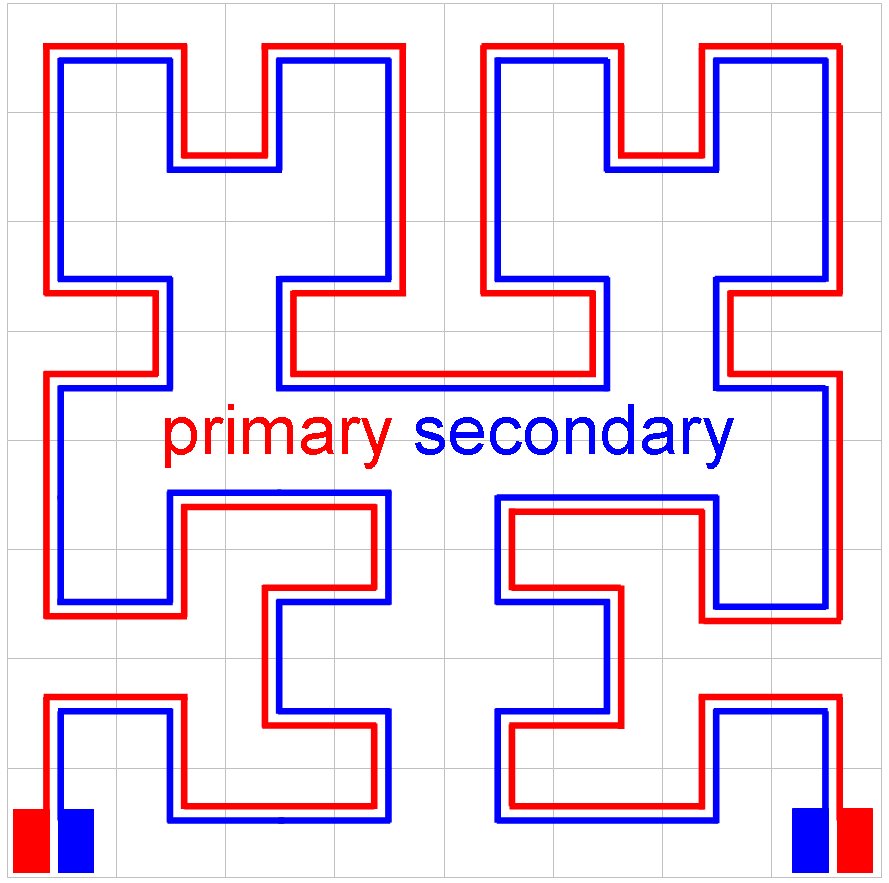Table of Contents
Fractal transformer
| Stan Zurek, Fractal transformer, Encyclopedia Magnetica, https://www.e-magnetica.pl/doku.php/fractal_transformer |
Fractal transformer1) - a type of transformer whose windings are arranged in a fractal pattern.
There are many fractal curves and figures which can be used as the basis for defining the shape of the windings: Hilbert curve, von Koch curve, Peano curve, etc.2)
Fractal technology can be useful for miniature coreless transformers for high-frequency electronics. For instance, a fractal transformer can be implemented as a single layer of conducting tracks deposited on a non-conducting and non-magnetic material.3) On-chip transformers operating at GHz frequencies (e.g. up to 60 GHz) can be implemented with this technology.
| → → → Helpful page? Support us! → → → | PayPal | ← ← ← Help us with just $0.10 per month? Come on…  ← ← ← |

S. Zurek, E-Magnetica.pl, CC-BY-4.0
 by G. Stojanović, M. Radovanović, V. Radonić, CC-BY-3.0
by G. Stojanović, M. Radovanović, V. Radonić, CC-BY-3.0
Construction of fractal transformers
From theoretical viewpoint, the length of a fractal curve can be increased by incrementing the number of steps (or the order of the curve). The curve can be thus infinitely long even though it is bounded by a finite area.
The infinite length is not achievable for fractal transformers (or other devices like fractal inductors and fractal antennas) due to the minimum width of the meandering conductor, as defined by the manufacturing process (e.g. width of the deposited track or thickness of the wire).
For instance, Stojanovic et al.8) modelled tracks deposited with aluminium, with 1 μm thickness and 6-10 μm width, on a 500 μm thick substrate. The modelled transformers had 1:1 turn ratio and were “stacked” so that the primary and the secondary windings were on separate layers. It is also possible to build a 1:1 fractal transformer with the primary and secondary windings on a single layer, which is less expensive from the production view point.9)
The coupling coefficient can be up to 0.9, which is satisfactory for coreless transformers. The parasitic primary-to-secondary capacitance can be reduced by slight offset of the positions of the windings against each other. This also improves the Q-factor and self-resonance frequency.
Electromagnetic simulations of such fractal transformers show that fractal layouts can give comparable or better performance than the more traditional transformers with spiral windings.10) The simulations are confirmed by other researchers experimentally, also showing that fractal transformers exhibit better performance than spiral transformers.11)


